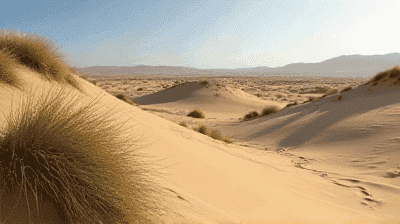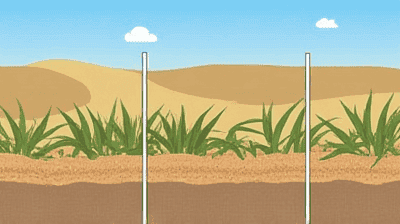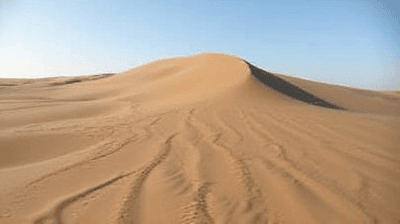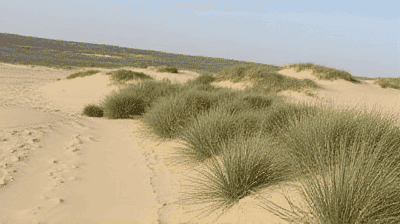
As global climate patterns shift, the phenomenon of desertification poses significant challenges to ecosystems, agriculture, and human livelihoods. One of the most visually striking manifestations of this issue is the encroachment of sand dunes into previously fertile areas, threatening biodiversity and destabilizing local communities. However, innovative approaches to sand dune stabilization—combining traditional knowledge about plants with cutting-edge technology—offer hope for reversing desert expansion.
Sand dunes are natural landforms created by the movement of sand grains through wind action. They typically form in arid or semi-arid environments where sand is abundant, and conditions favor sediment transport. Key factors in sand dune formation include:
Wind Direction and Speed: Strong winds are essential for transporting sand grains. The prevailing wind direction determines the shape and orientation of the dunes.
Sand Supply: Availability of loose, dry sand is crucial for dune formation. Coastal areas, riverbanks, and deserts often provide the necessary sediment.
Obstacle Presence: Natural or artificial barriers—such as vegetation, rocks, or human structures—can disrupt wind patterns and trap sand, leading to dune accumulation.
Vegetation plays a pivotal role in both promoting and stabilizing sand dunes. As plants grow in sandy environments, they help to anchor the soil and prevent erosion. The benefits of vegetation in dune stabilization include:
Root Systems: The roots of plants bind soil particles together, reducing the mobility of sand and creating a stable substrate.
Wind Breaks: Dense vegetation can act as a wind barrier, slowing down air currents and allowing sand to settle instead of being blown away.
Moisture Retention: Plants help retain moisture in the soil, creating a more favorable microclimate for other organisms and further aiding in stabilization.
Biodiversity Support: Vegetated dunes provide habitat for numerous species, enhancing local biodiversity and creating healthier ecosystems.

Desertification can be driven by various factors, including:
Climate Change: Increased temperatures, prolonged droughts, and altered precipitation patterns can exacerbate desertification processes.
Overgrazing: Livestock grazing can lead to the degradation of vegetation cover, leaving soil exposed and susceptible to erosion.
Urbanization: Expansion of urban areas into adjacent ecosystems can disrupt natural processes and lead to habitat loss.
Deforestation: Clearing forests for agriculture or development reduces the amount of vegetation available to stabilize sand dunes, increasing susceptibility to erosion.
The consequences of sand dune encroachment are profound, affecting both natural ecosystems and human communities:
Loss of Arable Land: As dunes migrate into previously fertile areas, agricultural land becomes less productive, threatening food security.
Biodiversity Decline: Desert encroachment can lead to habitat loss for native species, resulting in declines in biodiversity and ecosystem health.
Increased Erosion: Unstable sand dunes can lead to increased soil erosion, disrupting local ecosystems and affecting water quality.
Social and Economic Strain: Communities that depend on agriculture and natural resources may face economic hardships as desertification progresses.
1. Selection of Native Plants
Using native plant species is essential for successful dune stabilization. Native plants are adapted to local conditions and can better withstand drought and sandy soils. Some key considerations include:
Diversity: Employing a mix of plant species helps create a resilient ecosystem, allowing for a range of root structures that can stabilize the soil effectively.
Growth Rate: Fast-growing species can quickly establish cover to reduce erosion and promote soil development.
Root Structure: Plants with deep, extensive root systems anchor sand and soil, creating barriers against wind erosion.
2. Planting Techniques
Successful dune stabilization often involves specific planting techniques, including:
Direct Seeding: Broadcasting seeds in the sand can help establish vegetation quickly, providing immediate erosion control.
Using Seedlings: Planting young seedlings may offer higher initial survival rates than direct seeding, especially in areas with harsher conditions.
Installing Protective Barriers: Erosion control blankets made from natural fibers can provide temporary protection for newly planted areas, retaining moisture and reducing wind impact.
While natural methods are crucial, technological innovations can complement these efforts in combating desert encroachment:
1. Geotextiles and Erosion Control Matting
Geotextiles are synthetic or natural fabrics that help stabilize soils and promote vegetation growth by:
Reducing Erosion: By creating a barrier against wind and water erosion, geotextiles can prevent soil displacement until vegetation becomes established.
Moisture Retention: These materials can help retain soil moisture, creating a more hospitable environment for plant growth.
2. Sand Fencing
Installing sand fences can significantly influence dune formation and stabilization. Here’s how:
Trapping Sand: Fences slow wind speed and allow sand to accumulate, facilitating the growth of vegetation.
Guiding Dune Movement: Properly placed fencing can help manage the direction of dune migration, preventing unwanted encroachment into agricultural or populated areas.
3. Bioengineering Techniques
Combining biological and engineering practices can enhance stabilization efforts:
Living Dunes: This technique uses a combination of vegetation and structures to create sustainable dune systems that mimic natural processes.
Planting in Alignments: Strategically planting vegetation in alignment with the natural contours of the land can further enhance stability.
4. Monitoring and Data Collection
The use of technology for monitoring and data collection is vital for assessing the success of stabilization efforts:
Remote Sensing: Satellite imagery and drone technology can provide valuable information about land cover, vegetation health, and dune movement.
Soil Sensors: Implementing soil moisture and temperature sensors can help manage irrigation and ensure optimal conditions for plant growth.

The Great Sand Dunes National Park demonstrates effective sand dune stabilization through a combination of native plant restoration and public engagement. Efforts include:
Planting Native Grasses: Restoration projects have focused on seeding native grasses like blue grama and sand dropseed to prevent erosion and promote soil health.
Education Programs: Initiatives encouraging community involvement in restoration efforts have fostered appreciation for the park’s unique ecosystem, creating stewards for the future.
In Namibia, researchers and local communities have collaborated to stabilize encroaching dunes through:
Traditional Knowledge Application: Incorporating indigenous methods of land management, such as rotational grazing and selective tree planting, has improved soil conditions and enhanced plant cover.
Innovative Use of Technology: The integration of water retention techniques, including the use of gabions (wire mesh filled with stone), has helped manage surface water and prevent erosion.
Efforts to combat desertification in parts of the Sahara involve a variety of stabilization techniques:
Afforestation Projects: Strategies such as the "Great Green Wall" initiative aim to create a mosaic of tree cover to halt desert encroachment and support local habitats.
Community Engagement: Involving local populations in tree planting and sustainable land management encourages stewardship and increases success rates.
Effective policies are critical to ensuring sustainable sand dune management:
Land Use Regulations: Implementing land use policies that protect vulnerable areas can reduce pressures from urbanization and agriculture.
Funding for Restoration Projects: Government programs that provide financial support for restoration projects can encourage conservation efforts and empower communities.
Research Investments: Supporting research initiatives in desert ecology and restoration science can lead to new insights and innovative practices for stabilization.
Collaboration with local communities is essential for successful sand dune stabilization:
Capacity Building: Providing education and training on sustainable land management fosters local ownership of stabilization efforts.
Incorporating Traditional Practices: Recognizing and integrating traditional ecological knowledge can enhance project effectiveness and promote culturally relevant approaches.
Volunteer Programs: Encouraging community participation in planting and monitoring efforts strengthens social ties and supports collective stewardship of the land.

Nature-based solutions (NbS) are increasingly recognized as effective tools for tackling environmental challenges. Integrating plant-based and technological methods can lead to:
Enhanced Resilience: By combining solutions, ecosystems can better withstand the impacts of climate change and land degradation.
Biodiversity Support: Emphasizing native plant species in stabilization efforts promotes resilience and maintains local biodiversity.
Investments in research and technology will be critical to advancing sand dune stabilization efforts:
Long-Term Studies: Monitoring ecosystems over the long term will provide insights into adaptive strategies and the effectiveness of various techniques.
Innovative Technologies: Continued development of materials and technologies for erosion control and vegetation support can enhance the success of stabilization initiatives.
Combating desertification and stabilizing sand dunes requires a collaborative global effort:
International Partnerships: Collaborating with international organizations, governments, and NGOs can facilitate the exchange of knowledge and resources.
Scaling Up Successful Models: Sharing successful case studies and best practices can inspire similar initiatives in different regions facing desertification challenges.
The battle against encroaching deserts and sand dune instability is a pressing environmental challenge that requires a multifaceted approach. By integrating plant-based solutions with innovative technologies, we can effectively stabilize dunes and combat the impacts of desertification.
The importance of preserving and restoring desert ecosystems cannot be overstated. From supporting local communities and enhancing biodiversity to providing essential ecosystem services, the benefits of sand dune stabilization extend far beyond the immediate area. We must embrace a holistic vision for land management that values both nature and technology in our quest for sustainable solutions.
As we confront the increasing threat of climate change and land degradation, protecting and restoring our deserts becomes not just an environmental imperative but a moral obligation. By investing in sand dune stabilization efforts, we can foster resilience in these unique ecosystems and ensure a brighter future for generations to come.